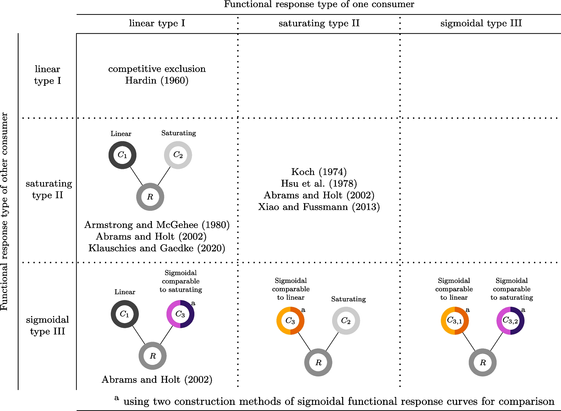What's the biggest crime people commit when it comes to their presentation slides?
We ask lots of people this - and the answers all add up to "too much stuff"
People put too much stuff on their slides and it overwhelms the audience.
Stop it.
What's the biggest crime people commit when it comes to their presentation slides?
We ask lots of people this - and the answers all add up to "too much stuff"
People put too much stuff on their slides and it overwhelms the audience.
Stop it.
There are only really two kinds of slide in a research talk.
1. Slides that take complex stuff & make it easier to take in (Graphs, infographics etc)
2. Signposting slides that remind your audience where we are in the flow of the talk.
Neither kind is about putting up a wall of text!
New paper from our lab is published now in Theoretical Ecology! 📰
Lilla Kiss @likiss and Toni Klauschies write on: "Consumer coexistence through the gleaner–opportunist trade-off in the light of sigmoidal functional responses"
Go read it here:
https://link.springer.com/article/10.1007/s12080-025-00618-7
#theoretical #ecology #modelling #functionalresponse #coexistence #TradeOff #phdchat

Species coexistence relies on ecological trade-offs, such as the gleaner–opportunist trade-off, which enables two consumers to coexist on a single shared resource through temporal resource variation and differences in their resource-dependent growth rates. The shapes of the consumers’ functional responses play a central role in this mechanism as they determine the consumers’ effect on the stability of the consumer–resource dynamics and their response to resource variation. While recent studies suggest that sigmoidal functional responses may be more common in nature than previously assumed, their impact on coexistence in the gleaner–opportunist model has not been systematically analyzed. In this study, we compared population growth models of two consumers with one or both exhibiting a sigmoidal functional response to the original gleaner–opportunist model with one consumer exhibiting a linear and the other a saturating functional response. Comparing the size of the parameter space allowing coexistence, we found that coexistence is most likely when consumers exhibit contrasting effects on and responses to resource variation, such as one consumer exhibiting a stabilizing sigmoidal and the other a saturating functional response, or one exhibiting a destabilizing sigmoidal and the other a linear functional response. Through this stabilizer–destabilizer trade-off, coexistence can also arise between two consumers that exhibit sigmoidal functional responses. Overall, sigmoidal functional responses provided the opportunity for coexistence that was of similar magnitude as in the original gleaner–opportunist model. Critically, sigmoidal functional responses allowed coexistence for less extreme handling times than the original model, emphasizing their importance when fitting models to empirical data.
You don't have to do Q&A at the end
You can do it earlier leaving you 5mins to wrap up. This lets you control the last thing they see and hear, rather than teh quesions.
What do you want to leave them with?
What a great crew at the 2025 #YoMos #workshop! If you want to read a #recap of what the workshop was like for us (including more photos!), please check out this #blogpost on our homepage:
https://www.yomos.org/post/yomos-2025-recap
Kick-off meeting for 2026 is happening in 2 weeks! Get in touch now if you want to get involved 🦊